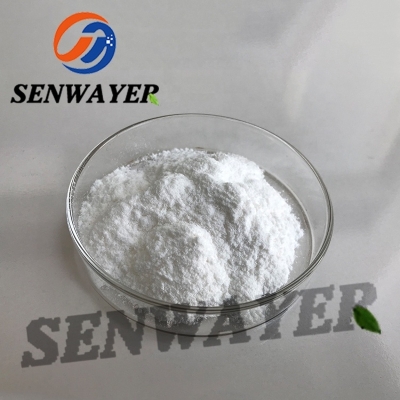Looking forward to the global biomedical research and development situation in 2017
-
Last Update: 2017-02-09
-
Source: Internet
-
Author: User
Search more information of high quality chemicals, good prices and reliable suppliers, visit
www.echemi.com
[market analysis of China Pharmaceutical network] for the domestic and global biomedical industry, the past 2016 is a tough year to move forward It is understood that the output of innovative drugs in 2016 decreased significantly compared with that in 2015, which is low since 2007 There is not even an original new drug approved for listing in China However, it is undeniable that the R & D level of Chinese innovative drugs is still improving, and the pace of Chinese pharmaceutical enterprises to the world is accelerating (looking forward to the global biomedical research and development situation in 2017 picture source: Baidu picture) Liu Changxiao, researcher of Tianjin Pharmaceutical Research Institute and academician of Chinese Academy of engineering, has written for this newspaper for five consecutive years This year, he will still review the biomedical industry situation in 2016 from the perspective of strategy and strategy, and look forward to the biomedical research and development situation in 2017 from a forward-looking perspective The output of innovative drugs has reached a new low According to the 2016 annual new drug review report issued by the US Food and Drug Administration (FDA), as of the end of December 2016, FDA has approved 22 new molecular entity drugs, including 15 chemical drugs (NDA) and 7 biological agents (BLA), a new low since 2007 Compared with 45 new drugs in 2015, the number of FDA new drugs approved in 2016 was less than half of the previous year Although the industry generally believes that the quality of new drugs is high and the proportion of approved biological drugs is increasing, the number of biological drugs is far less than that in 2015 In 2016, there were only 31 original new drugs approved for listing in the world, including 19 in the United States, 10 in the European Union and 2 in Japan, and none in China In 2016, the FDA Center for drug review and Research (CDER) approved 22 original new drugs, including 15 new molecular entities and 7 new biological products, of which 8 were the first drugs, accounting for 36% of the total approved In addition, nine were approved for treatment of rare diseases, accounting for about 41% of the total number approved Although the number of new drugs is lower than that of the previous years, the quality of new drugs has a bright spot Among the 22 new drugs, there are many innovative treatment drugs, many new generation drugs and diagnostic drugs For example, the real sense of protein interaction inhibitors, such as venclexta, PD-L1 antibody tecentriq, and so on, antibody drugs return to the mainstream stage, showing eye-catching performance In the field of treatment, antiviral infection and cancer drugs are also attractive Gilead's new hepatitis C drug epclusa is one of the four potential anti infective drugs approved by FDA in 2016, which is used to treat all six genotypes of hepatitis C In terms of cancer drugs, lartruvo for soft tissue sarcoma, rubrca for ovarian cancer, tecentriq for bladder cancer, and venclexta for some chronic lymphoblastic leukemia deserve attention In addition, small and medium-sized pharmaceutical enterprises are also active in innovation and R & D Pfizer and Novartis, the top two global pharmaceutical sales companies, were absent from the list of new drugs to be listed in 2016, while nine small and medium-sized pharmaceutical enterprises represented by jazz and Clovis each had one new drug to be listed, Roche, MSD and Lilly each had two new drugs approved, and Alberto, Sanofi, Gilead, TIWA and other giants each had one new drug approved The dominant position of the world's generic drugs remains unchanged In 2015, the new molecular drugs approved by the United States and the European Union set a record, making 2016 full of hope Fears of new drug expiry in 2015 and 2016 continue to spread Generic competition plays an irreplaceable role in the market and patients' demand ability Especially in the situation of medical expenditure reduction in various countries, generic drugs are put in an important position in all countries The development of generic drugs to achieve the accessibility and economy of drug treatment is an important strategy to reduce the burden of multi-party medical care More than 95% of the drugs used in clinical practice in the United States are generic drugs, and more than 95% of the drugs declared by enterprises are generic drugs More than 90% of the drugs approved by FDA are also generic drugs every year; Japan is also dominated by generic drugs Only the top 50 large enterprises of 1600 pharmaceutical enterprises can make innovative drugs, and the last 1500 enterprises can do generic drugs solidly to reduce the cost of national diagnosis and treatment and meet the needs of the people; however, the new drugs approved by China, whether new molecular entity drugs or generic drugs, are not as good as those approved by the United States By 2015, the backlog of generic drugs to be approved in the U.S had reached more than 6000 In 2016, the U.S FDA Office of generic drugs (OGD) had a hard time to meet the review objectives, and the number of generic drugs approved for listing had reached a record In 2016, the total number of approved generic drugs was 764, accounting for 88% of the 868 varieties approved for marketing in 2016 Less than 3% of innovative drugs have been approved and less than 9% of innovative drugs have been improved Clinical trials and reviews tend to be standardized In the global development of new drugs, international multicenter clinical trials (MRCT) have been widely used, and become the main source of clinical trial data for new drug registration, which is used for new drug applications in different countries There are two kinds of clinical trial data accepted by the United States: using foreign non ind clinical trial data to support the United States ind or NDA Clinical trials should meet the requirements of GCP standard, and FDA believes that field inspection is necessary to verify the reliability of test data All the data of foreign clinical trials are used to support NDA The data are applicable to the American population and the clinical trials in the United States are completed by qualified researchers, and the data can be considered reliable without on-site inspection FDA can also confirm the reliability through on-site inspection or other ways From the regulatory perspective, the application of MRCT data to support registration needs to be reviewed from three aspects: first, acceptability, reasonable trial design scheme, data quality in line with ethical principles and GCP requirements; second, applicability, the efficacy and safety of the results can be used for patients in the region; third, consistency, consistency between regions of drug effect In 2016, the European Union issued the opinion on extrapolation of clinical trial results outside the European Union to the European community The focus of drug market review is whether the clinical trial conforms to ethical principles, GCP requirements and data quality is guaranteed Japan emphasizes strict compliance with ethical principles and GCP requirements, and Japan's pharmaceutical regulatory authorities should conduct on-site inspection on any institution participating in clinical trials Immunotherapy has made significant progress In 2014, only 21% of personalized drugs were approved by FDA in the United States, and in 2015, the number increased to 28%, among which the number of anti-tumor drugs increased to 35%, which is related to the priority approval of personalized drugs in the industry The number of new drugs approved for hereditary rare diseases is also increasing, which reflects the progress of genomics and personalized drugs In 2016, more than 40% of newly developed drugs were personalized drugs, which will continue to rise in the future Small molecule immunotherapy will be strongly supported by pharmaceutical industry, and a large number of T cell activators are expected to enter clinical practice Crispr-cas9 is also a new technology of concern It is expected that crispr-cas9 technology will be optimized quickly and become more efficient It has attracted the attention of all countries to search for new gene technology High throughput sequencing technology promotes the research of cancer and immunology, as well as the development of individualized immunotherapy Car-t cell therapy is a kind of adoptive immunocytotherapy, including in vitro modification of T cells to target tumor antigens and generate corresponding immune response This cell therapy has a very significant effect in the early treatment of CD19 positive leukemia, which makes the market spend a lot of money on research and development of kit, Juno company and Novartis company, the investor in this field In cancer immunotherapy, most of them are based on blocking the immunosuppressive pathway For example, the mechanism of immunosuppressive inhibitors targeting at immunocheckpoint proteins such as PD-1 and PD-L1 is to block the immunosuppressive pathway, so that T-lymphocytes can attack tumors Because immunosuppressive therapy cannot be effective for all cancer patients, it is also important for some patients to activate their immune response to cancer Lycera, a biopharmaceutical company dedicated to the development of breakthrough immunomodulatory drugs, announced the launch of clinical phase 1 / 2-A trial to test the efficacy of its cancer immunotherapy lyc-55716 in the treatment of patients with advanced, recurrent or refractory solid tumors The application of new immunotherapies, such as T-cell therapy for blood tumors, new methods for brain tumor therapy with cancer vaccine and continuous immunotherapy, has a wider impact on cancer patients, which is an important progress in cancer treatment in 2016 In 2016, large pharmaceutical companies will continue to participate in small-scale M & A or cooperation to make up for the new products that enterprises urgently need to add, and small pharmaceutical companies are trying to avoid annexation The contribution of small companies to innovation and R & D has always been valued by the world, which is an important scientific and technological force for large companies In 2016, Novartis benefited from the listing and strong drug franchising sales of entresto, a heart failure drug, in which fengomod, Everest and nilotinib were favored by the market; the gap between Roche and Pfizer and Novartis was still obvious; Gilead leapt from a medium-sized biopharmaceutical company to a large pharmaceutical company; Alberto acquired pharmacyclics, and obtained a potential new anti-cancer drug, irutinib , which is more conducive to the promotion of the company In recent years, more and more enterprises with similar development strategies in China have influenced global drug development through cooperative M & A In 2016, there were 70 m & A cases, 60 horizontal integration cases, 2 vertical integration cases and only 1 business transformation case of domestic pharmaceutical and biological listed companies Generally speaking, there are more M & A in the pharmaceutical industry and less cross-border M & A.
This article is an English version of an article which is originally in the Chinese language on echemi.com and is provided for information purposes only.
This website makes no representation or warranty of any kind, either expressed or implied, as to the accuracy, completeness ownership or reliability of
the article or any translations thereof. If you have any concerns or complaints relating to the article, please send an email, providing a detailed
description of the concern or complaint, to
service@echemi.com. A staff member will contact you within 5 working days. Once verified, infringing content
will be removed immediately.







